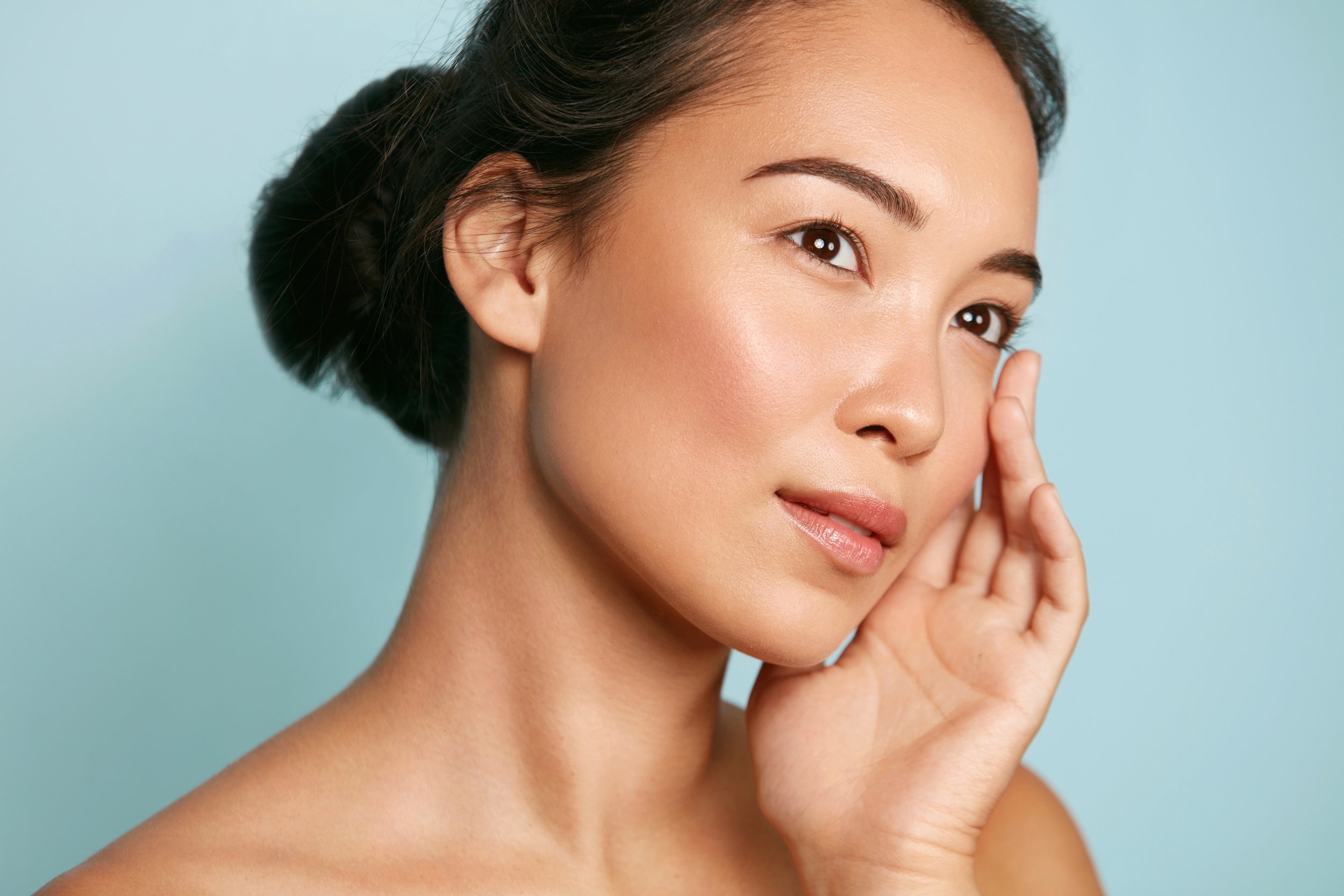
Dermalux Tri-Wave MD Therapy
The latest modality to join The Skin Department is a revolutionary medical device powered by proprietary LED technology, the Tri-Wave MD from Dermalux. This is a clinically proven, non-invasive, chemical-free way of healing and rejuvenating the skin.
As the only LED system that delivers three concurrent wavelengths (Blue 415nm, Red 633nm, and Near-Infrared 830nm), the Tri-Wave MD offers the most advanced treatments programmes for skin rejuvenation, pigmentation, redness, and sensitive skin conditions. It also offers treatment options for Photodynamic Therapy (PDT).
-
The Tri-Wave MD is a free-standing Light Emitting Diode (LED) Phototherapy system that emits low-level energy from the visible and infrared region of the light spectrum. This LED system targets the skin at different levels via single wavelengths of light, offering customizable power output to promote incredible cell activation. It is used for the treatment and management of a wide range of cosmetic, dermatological, and medical conditions.
The Tri-Wave MD has a Medical CE certification for the treatment of acne, wound healing, psoriasis, and pain (musculoskeletal).
Tri-Wave MD delivers clinically certified Blue 415nm, Red 633nm, and Near-Infrared 830nm at an amplified optical power. One treatment will provide instant standalone results, while a course of treatment offers long-lasting effects.
-
Blue Light 415 nm: (Penetration up to 1mm)
Key Mechanism: Anti-bacterial Action
Blue light targets the Propionibacterium acnes (P. acnes) bacteria on the skin. When the bacteria absorbs blue light at 415nm, then the photo-excitation of porphyrins (specifically coproporphyrin III), triggers a photochemical reaction and the porphyrins convert to ‘singlet oxygen’. Singlet oxygen has a powerful antibacterial ability to help eliminate spots whilst being gentle on the skin. With continued use, this clarifying effect can help in the prevention of breakouts.
In addition to the bactericidal effect of blue light therapy, this treatment also benefits the immune system which can now stop producing inflammatory chemicals to destroy the bacteria, as it is already dead.
-
Below we breakdown what P.acnes is and the reaction that occurs when blue light is used to combat it.
P.acnes is an oxygen-intolerant, anaerobic bacteria.
It can only grow when hair follicles on the skin become blocked and are starved of oxygen.
Because P.acnes bacteria thrives in low oxygen environments, in such environments it produces porphyrins (mainly coproporphyrin III).
Excitation of porphyrins with blue light 415nm triggers a photochemical oxidation reaction.
During this photo-excitation, porphyrins release Singlet Oxygen (peroxide).
This reaction can eliminate spots on the skin and prevent future breakouts.
Photo-excitation is confined to the bacteria only, with no negative effects on the skin.
Blue light 415nm is the most clinically evidenced wavelength for the destruction of P.acnes bacteria.
-
Red Light 633nm: (penetration 2 to 3 mm). Key Mechanism: Energising Action. Rejuvenating Red Light is absorbed in the mitochondria, the ‘cell powerhouse’ responsible for the production of essential energy, Adenosine Triphosphate (ATP), for cellular function. Red Light is absorbed into the body (by the chromophore cytochrome c oxidase), resulting in an increased cellular metabolism for cell regeneration and renewal. In technical terms, Red Light activates fibroblasts growth factor, which induces the production of collagen type 1, increases matrix metalloproteinase-9 (MMP-9), and decreases MMP-1.
Red light can be used for a range of treatments to help with the improvement of photodamage and wound healing. It has also been shown to assist the lymphatic system to boost detoxification, and to stimulate circulation in the body, which assists in the delivery of oxygen and nutrients to the cells.
-
Essentially, Red Light supercharges our cell energy, triggering a cascade of biological pathways that result in incredible skin-enhancing effects. We list down the process below.
Cells need energy (ATP) to regenerate, proliferate, and repair.
The mitochondria (cell power plant) manufactures ATP.
ATP is oxygen and glucose which are both carried to the cells via blood flow.
Mitochondria are responsive to Red and Near-Infrared Light.
Photon (light) energy is absorbed by cytochrome c-oxidase in the mitochondria.
This photon energy is converted to chemical energy to “power-up” the cells.
Result: this stimulates ATP production, and initiates ‘biostimulation’ to increase cell reproduction and wound healing.
-
Near-Infrared Light 830nm: (penetration 5-10 mm)
Key Mechanism: Wound Healing Action
Regenerating Near-Infrared light targets the skin’s deepest layers and stimulates cell activity with advanced rejuvenation and healing benefits.
Near-Infrared (NIR) 830nm is absorbed by chromophores in the cell membrane which stimulate complex cellular processes such as the release of Nitric Oxide. These processes result in increased collagen, elastin, and growth factor production, as well as repair mechanisms essential for wound healing.
The release of Nitric Oxide (NO) increases blood flow (vasodilation) and this, in turn, stimulates the formation of new vessels and aids vascular repair. Light-stimulated Neo-vascularisation also can be used to improve skin perfusion and increased tissue oxygenation. The stimulation of lymph activity aids the removal of toxins which helps to reduce oedema (swelling) and inflammation.
On top of this, the increase in blood circulation will help to improve complexion and general skin health. NIR 830nm is also proven to suppress tyrosinase (an enzyme that contributes to the formation of melanin), so the application of NIR can help to reduce the appearance of hyperpigmentation.
-
Near-Infrared Light (NIR) is absorbed by chromophores in the cell membrane¾this increases permeability
This stimulates the release of Nitric Oxide (NO) into the bloodstream
Nitric Oxide (NO) triggers blood flow, increasing oxygenation to reduce inflammation
This process also promotes a ‘pseudo-wounding’ without trauma, to kick start IPR response
Release of growth factors (TGF-b and FGF) provide proliferation and promote healing
The stimulation of macrophages and lymphocytes aids in the detoxification of the body, reducing swelling and inflammation
Regulates melanin production via tyrosinase suppression
Neutrophils increase superoxide dismutase (a powerful antioxidant)
Increases skin health and immunity to pathogens (Langerhans cells)
